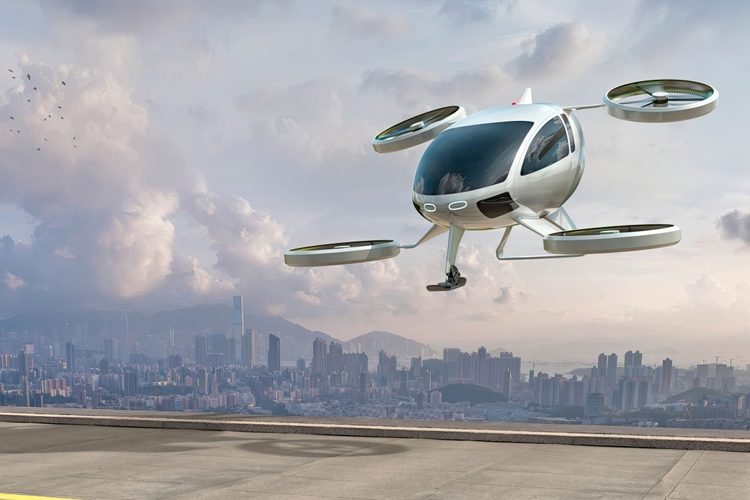Navigating the highs and lows of the air traffic management industry
- Like
- Digg
- Del
- Tumblr
- VKontakte
- Buffer
- Love This
- Odnoklassniki
- Meneame
- Blogger
- Amazon
- Yahoo Mail
- Gmail
- AOL
- Newsvine
- HackerNews
- Evernote
- MySpace
- Mail.ru
- Viadeo
- Line
- Comments
- Yummly
- SMS
- Viber
- Telegram
- Subscribe
- Skype
- Facebook Messenger
- Kakao
- LiveJournal
- Yammer
- Edgar
- Fintel
- Mix
- Instapaper
- Copy Link
Posted: 7 February 2024 | Simon Hocquard | No comments yet
Simon Hocquard, CANSO’s Director General sets out the challenges and opportunities faced by the Air Traffic Management industry, in this exclusive International Airport Review article.


Navigating the highs and lows of the air traffic management industry.
Today’s air traffic management (ATM) industry faces a myriad of challenges – from post pandemic swings in traffic; enabling new airborne vehicles, like drones and unmanned vehicles, to safely take to our skies, to achieving aviation’s lofty ambition to meet net zero carbon emissions by 2050. Navigating this complex environment will take a transformation unlike any we have witnessed before.
Technology will be needed to supplement human performance. But there is a hurdle to overcome – the inherent distrust of new technology.”
Recent traffic lows triggered by the COVID-19 pandemic serve as a stark reminder of the need for greater resilience and adaptability in ATM. New systems integrating artificial intelligence (AI) and automation offer a solution, but charting a course to safer, greener, and more efficient skies will also require concerted cross-industry collaboration.
New technology
Our first and most pressing challenge is enhancing capacity. In many parts of the world, traffic levels are already back to or, in some cases exceeding, pre-pandemic levels. Across the world, demand from an air traffic control (ATC) perspective is broadly being met. But we mustn’t rest on our laurels. We know that our skies are already capacity-crunched and are set to become even more so with the advent of new airspace users such as electric vertical take-off and landing aircrafts (eVTOLs). Managing this increased volume of airborne vehicles efficiently, while maintaining or even enhancing safety and avoiding congestion, represents a significant challenge for our operations and controllers around the globe. Greater cross-industry communication and participation in collaborative platforms is a pathway to enhanced efficiency.
Charting a course to safer, greener, and more efficient skies will also require concerted cross-industry collaboration.”
Such platforms are already available and proving their worth. There’s Network Manager in Europe, and CADENA in Latin America – an Air Traffic Flow Management initiative created by CANSO to ensure that all aviation stakeholders coordinate and communicate when faced with disruptive issues like weather events or staff shortages. Our customers are already reaping the benefits. During Hurricane Maria in 2017, CADENA delivered more than U.S. $1.5 million in savings to airlines – which is why CANSO is implementing similar initiatives across the globe. The principle is simple: to share data and coordinate in a timely fashion to ensure the efficient flow of air traffic.
Embracing automated technology will be equally vital as the traffic mix becomes ever more complex. New vehicles with different performance characteristics to traditional aircraft will make the air traffic controller’s task far more challenging. Technology will be needed to supplement human performance. But there is a hurdle to overcome – the inherent distrust of new technology. Building confidence in advanced technology will be essential. Successfully integrating new airspace users safely will also require regulation to keep pace with the industry so that we don’t stymy innovation or hinder access to our airspace.


Keeping the world connected.
A sustainable industry
Our final challenge is sustainability. We all have a role to play in meeting our net zero carbon emission goal. Sustainability in aviation goes far beyond deploying fuel-efficient engines or investing in carbon offsets. It will take a comprehensive systems overhaul, where every facet of the industry’s operations is examined and reconfigured to minimise environmental impact. We must consider a systems over individual flight emission approach – a holistic view which considers interconnected factors and recognises the ripple effect of each decision across the ecosystem. Recognising the systemic nature of these challenges, collaboration across sectors becomes vital. This means not just intra-industry cooperation but working alongside governments, environmental organisations, and even passengers to ensure a sustainable future.
Significant emissions don’t just stem from the plane’s core operations, however, and ATM has a core role to play. By optimising flight paths, reducing holding patterns, and emphasising continuous descent operations, air navigation service providers (ANSPs) can markedly enhance efficiency and sustainability and reduce consumption.
Greater cross-industry communication and participation in collaborative platforms is a pathway to enhanced efficiency.”
Spearheading the drive towards sustainability in ATM is CANSO’s Green ATM programme, which underscores the sector’s genuine commitment to environmental sustainability. It does this by innovating and introducing best practices that have the potential to reduce aviation’s carbon footprint. The programme aims to shine a light on ANSPs environmental performance and uncover potential improvements.
In conclusion, the path forward in ATM is a challenging yet promising one. To navigate this intricate tapestry successfully, collaboration between airlines, regulators, technology providers, and ANSPs is paramount. Whether it’s sharing real-time data, jointly planning airspace redesigns, or simply understanding the evolving demands of the aviation industry, the future hinges on integration and innovation.
The skies of tomorrow hold the promise of being safer, more efficient, and environmentally friendly, but achieving this vision requires concerted efforts, a willingness to embrace change, and a steadfast commitment to building a sustainable future for aviation.
About the author – Simon Hocquard


CREDIT: CANSO
Simon Hocquard, is the Director General of the Civil Air Navigation Services Organisation (CANSO) – the global voice of air traffic management.
In this role, Simon is responsible for delivering CANSO strategies, expanding worldwide membership, and enhancing CANSO’s relationship with its industry peers and stakeholders.
Prior to this, Simon served at NATS, the UK air navigation service provider where his roles included Operations Director at Swanwick, the largest air traffic control centre in Europe. Simon is also appointed by the European Commission as Chairman of the Network Management Board, which governs the overall European Air Traffic Network, and drives performance improvement across Europe.
Related topics
Air traffic control/management (ATC/ATM), Airside operations, Social responsibility, Sustainability


















